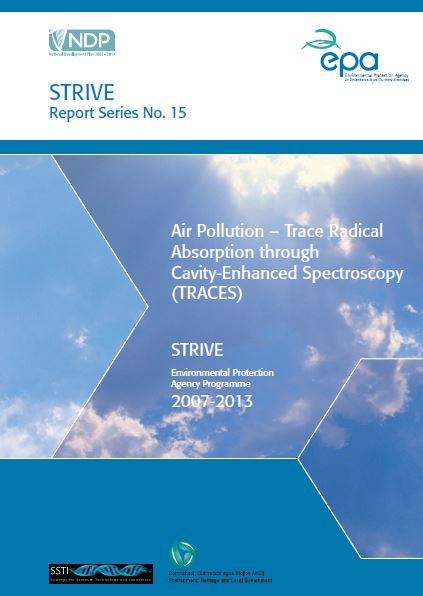Air Pollution - Trace Radical Absorption through Cavity-Enhanced Spectroscopy (TRACES)
Final Report for the ERTDI-funded project: 2005-ET-MS-28-M3
Summary: STRIVE Report 15 - U. Heitmann et al

This project has developed an incoherent broadband cavity-enhanced absorption spectroscopy (IBBCEAS) system for the detection of the important nocturnal oxidant NO3. The IBBCEAS system has been deployed and demonstrated in both atmosphere simulation chambers and in the field. An extensive suite of spectral analysis software was developed and tested on the system. It has been shown that very long optical cavities are feasible and robust: the 20 m cavity demonstrated at the SAPHIR (simulation of atmospheric photochemistry in a large reaction) simulation chamber is longer than typical cavity ring-down and cavity-enhanced absorption systems by over an order of magnitude. Such long cavities are particularly suited to broadband measurements and the detection of multiple atmospheric trace gases because they allow lower reflectivity mirrors to be used while retaining high absorption sensitivity. Lower reflectivity mirrors are suited to broadband measurements because broadband light sources have much lower spectral power densities than lasers; in addition, the high reflectivity region is broader for lower reflectivity mirrors, allowing several species to be detected simultaneously.
Also available for download:
-
Print-Quality Version (i.e. high resolution PDF) of STRIVE Report 15